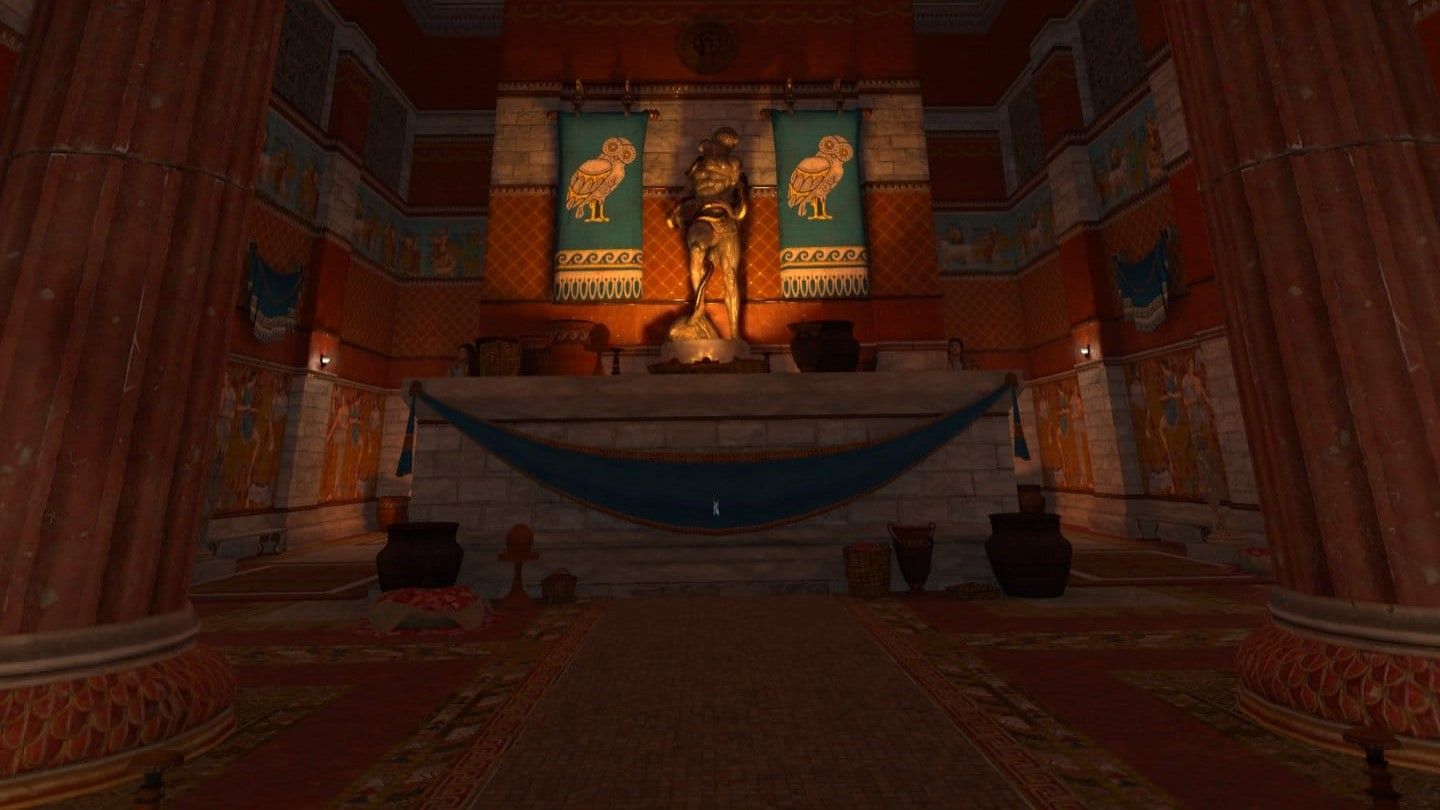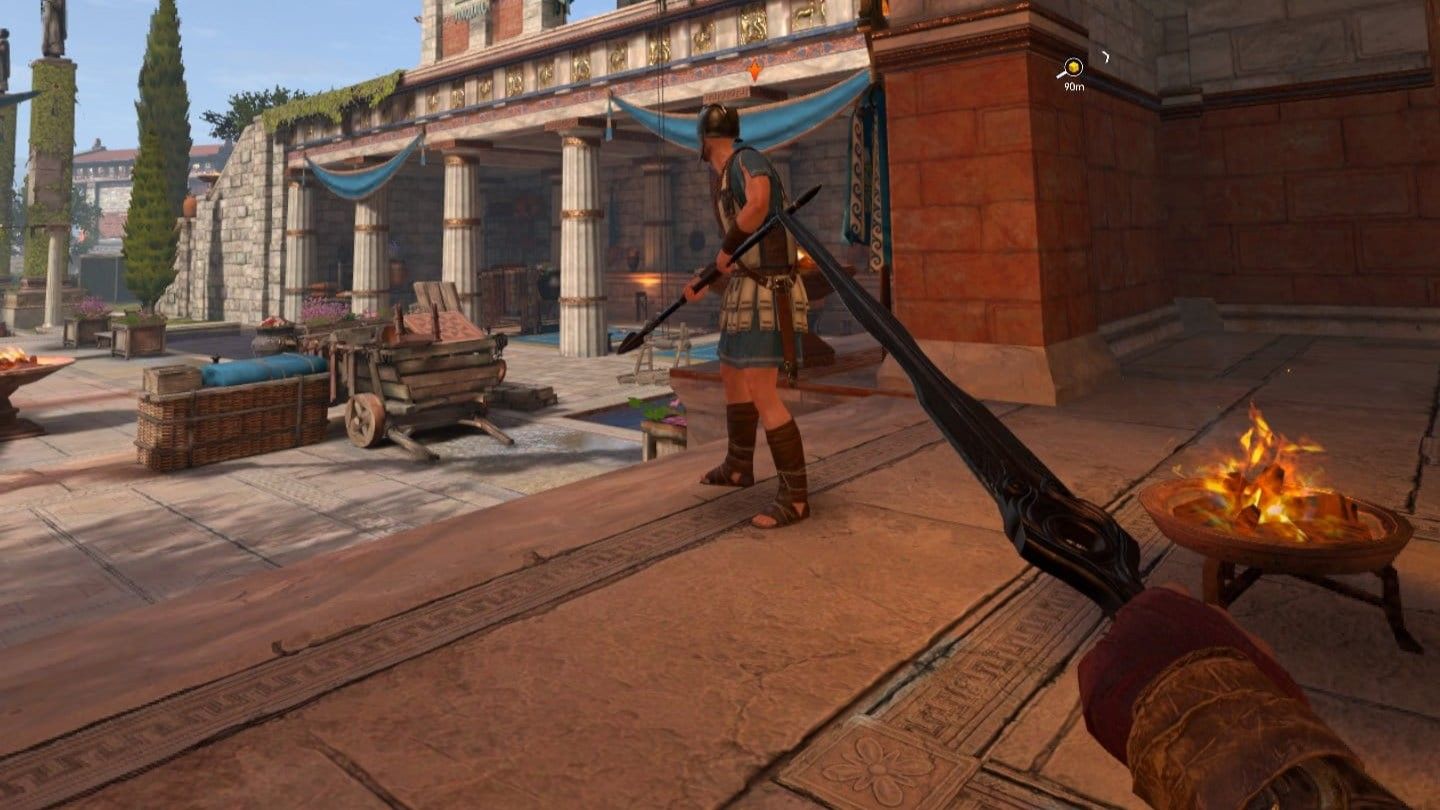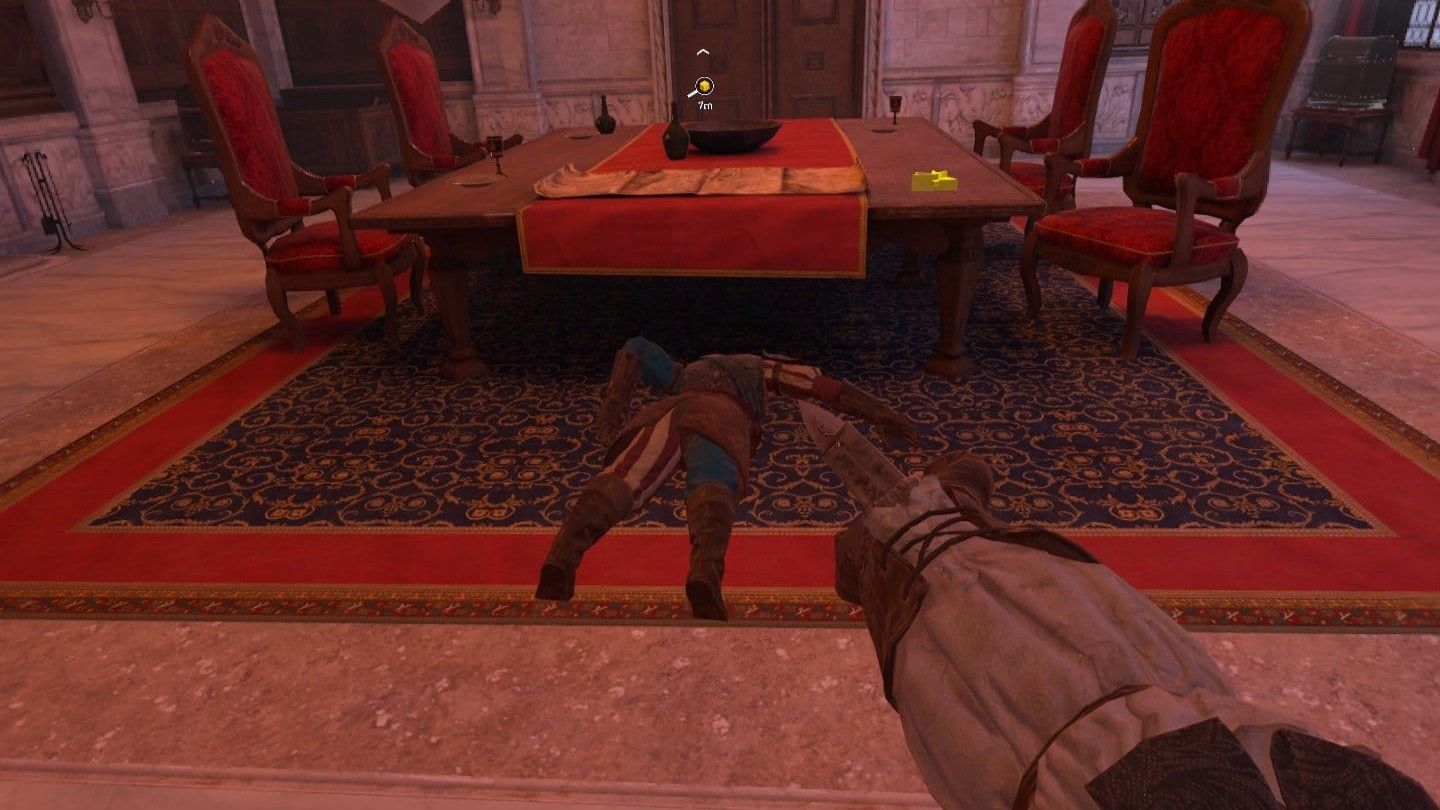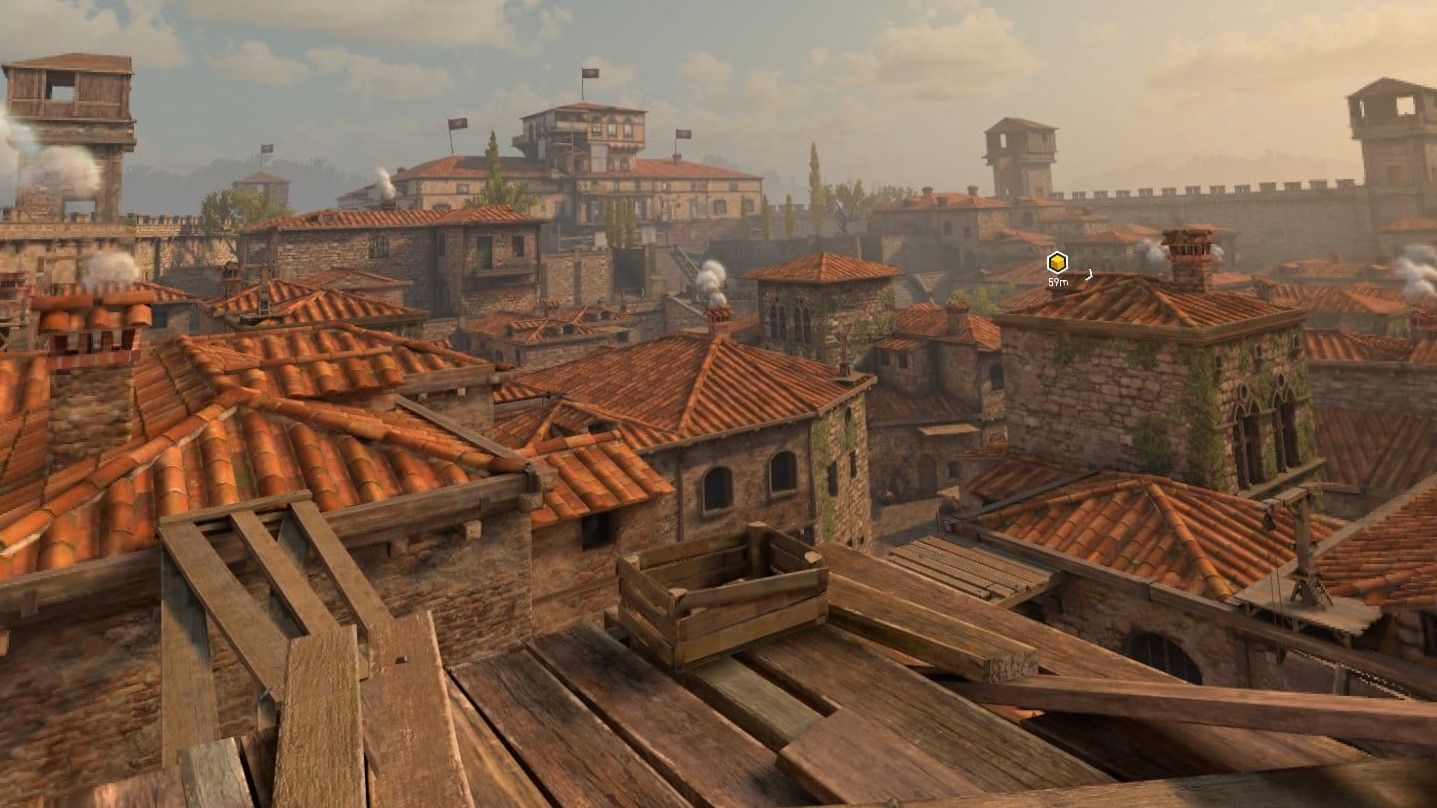Assassin's Creed Nexus offers a thrilling VR first-person spin-off, delivering a varied campaign that lives up to the main series. Read on for our full review:
It wouldn't be a stretch to call Nexus the most fun I've ever had with Assassin's Creed. I finished the 20-hour campaign thinking "I want more," and Ubisoft's created one of the strongest VR adaptations for an established series yet. Though there's a familiar tale of the Brotherhood versus Abstergo, Nexus is newcomer-friendly while providing plenty for established fans.

Going undercover as an elite hacker for the Brotherhood, you're tasked with infiltrating Abstergo and stop them from finding powerful Isu artifacts that were unknowingly encountered by three returning protagonists - Connor, Ezio and Kassandra, whose returning voice actors bring each character to life well.
The backdrop to every mission is the Animus, a machine that takes you inside each assassin’s memories. This has been the case for every Assassin’s Creed game, but with Nexus, making eye contact with someone while in the Animus strings together the story in a much more personal way. No spoilers here, but it all culminates in a mixed reality ending that sticks with me more than the one in Half-Life: Alyx.
If you’ve got a fear of heights, you can avoid Nexus’ Leaps of Faith almost completely. There’s immense freedom though, vaulting across the rooftops of a city like Venice, climbing a tower and then stretching your arms out for a fall from the sky. Jumping feels like you're on auto-pilot to ensure precision, but I found myself walking away from the crowds on the street to find a foothold on a wall so I could spend hours leaping between pillars, swinging across bars, and sprinting across roofs with minimal comfort settings.
Great level design ensures these environments feel natural for parkour with plenty of interactivity, though grabbing ledges didn't always respond as expected, leading to some frustrating falls. Thankfully, activating hand stabilization fixed this - more on that below. I also appreciated the subtle controller feedback each action brings, whether that's grabbing ledges or unsheathing swords.

Missions don't lack for extras, either. I often find games that stuff their worlds with tons of minor side content end up being boring, so I'm relieved Nexus offers plenty to do without mindlessly cramming the map. Parkour challenges activated by finding gold constructs was enjoyable, there's plenty of lore detailing each location's history, while platinum constructs reward those seeking a climbing challenge. That adds some nice replayability, and I found myself visiting missions again to complete these challenges.
Most missions include high-alert areas where enemies are gathering, so infiltration requires a stealthy approach and three difficulty settings determine how alert guards are. Nexus urges caution, as any enemies that find dead bodies will summon reinforcements by ringing an alarm bell. Unless you destroy the bell first, anyway. I encountered some performance stutters on Quest 3 when enemies summoned reinforcements in what felt like an endless wave of foes.
I often found these stealth segments lacked suspense, even on harder difficulties. That's especially true in the tailing missions that involve quietly following targets without arousing suspicion. You can quickly duck behind cover or blend in with crowds, but in a stealth mission when they don’t see you despite your shocking lack of subtlety, you start to yearn for more believable non-playable characters. Not many game developers have taken advantage of eye tracking yet – there’s no eye tracking hardware in Quest 2 or Quest 3 – but now I’m desperate for a sequel to Nexus that can apply it to these areas of the game.

Combat is considerably better and Nexus adapts signature Assassin's Creed moves well. Swords, crossbows, throwing knives and smoke bombs add a pleasing variety of weapons that control similarly to other VR action games. Stealth assassinations with your hidden blade remain my favorite option and flicking your wrist while holding the trigger activates this intuitively. Leaping toward enemies for air assassinations is also very satisfying.
For anyone struggling with combat, Ubisoft's added a useful option for visual feedback during fights like highlighting enemy weapons. It helps track foes during fast-paced combat sequences, which often require parrying enemy blows by directly blocking with your sword or tomahawk. Actively swinging back instead of blocking unbalances foes, opening an opportunity to strike.
Abilities are further upgraded upon completing missions. These don't provide any dramatic changes, though buffs like reduced cooldown for dash attacks and more ammunition for your throwing knives or arrows are certainly welcome. Returning to previous missions lets you do so with all of these upgrades.

I also enjoyed the mixed reality sequences, though these are limited and rather infrequent. That often involves grabbing digital “cores” and placing them across a grid to match a pattern, which isn't particularly exciting in itself but, while I won't spoil the specifics, I appreciated how this contributes to the ending's narrative.
Assassin's Creed Nexus VR - Comfort
Nexus contains the most extensive comfort and accessibility settings I've ever seen in a VR game. It begins by questioning your prior experience with VR games and puts you into one of four pre-determined comfort setting categories that can be customized further. Optional reminders to take regular breaks can also be set.
You can choose between stick-based artificial locomotion or teleportation movement. Standing and seated play are supported. Smooth and snap-turning cameras are available with adjustable turning speeds and angles. Vignettes can be applied at different strengths, while sprinting is activated by holding down the left or right stick, depending on your selected dominant hand. Haptic feedback can be switched off.
Parkour Assistance can automatically do parkour movements for you, with the exception of climbing, while the 'Parkour Visualiser' shows a line indicating where you'll jump. For anyone concerned about the famous Leap of Faith jumps or climbing high locations, a ‘Fear of Heights’ option displays an Animus grid around you to reinforce that you’re not actually falling.
Hand stabilization assists those with less steady hands when handling in-game objects, which can be turned off or set to low, medium and high. Subtitles come in three different sizes with different background choices behind them for readability. Virtual noses can be applied for frame of reference. Buttons between both controllers can be swapped.
For a more comprehensive rundown, Ubisoft released a full breakdown outlining accessibility settings.
Perhaps my biggest gripe beyond stealth is the odd jank. On more than one occasion I killed an enemy to retrieve a door key from them only to find the key couldn't be grabbed after the kill. I was able to resort to lock picking rather than restart my progress, but it was still a frustrating break in the role to be forced down another path. Other immersion killers include opening doors and seeing them pass through my body or environmental objects. On Quest 3, I noticed visual pop-in of objects when investigating the town hall on Connor's first mission.
I wish you could fully turn off the various user interface elements. Markers indicating where nearby objects only appear briefly upon pressing the Y button, so it's usually minimal, but you can't remove the main objective marker. Map boundaries also show clearly defined lines when you reach the edge, though this makes narrative sense since certain areas aren't within the scope of particular memories.

What also stood out is how far Nexus pushes the visuals on standalone hardware. Environments look impressive with nice draw distance, helped by a great range of campaign locations like Venice and Athens. A few NPC character models are rough and Quest 2 has a noticeable resolution drop, though performance felt decent when I tested it on the older headset. Ubisoft clearly put considerable resources into this campaign and Nexus looks great.
Assassin's Creed Nexus VR Review - Final Verdict
Assassin's Creed Nexus marks a triumphant return to home VR for Ubisoft, a studio relatively absent since Star Trek: Bridge Crew and Space Junkies. Only a small percentage of 2023’s Quest VR players will remember Eagle Flight on the Rift platform, but spending more than 20 hours in Nexus and feeling great the whole time is a visceral testament to the progress of Ubisoft’s work in VR.
Nexus demonstrates what a full-fledged VR entry can do for a big series, delivering a sizable campaign with accessibility at its core. Gameplay feels well adapted from the main series, parkour across such diverse environments is really enjoyable and that's backed by a strong presentation. Minor jank and stealth issues aside, it's the most fun I've had with Assassin's Creed and comes highly recommended.

UploadVR uses a 5-Star rating system for our game reviews – you can read a breakdown of each star rating in our review guidelines.
from UploadVR https://ift.tt/P4Gc2xH
via IFTTT
No comments:
Post a Comment